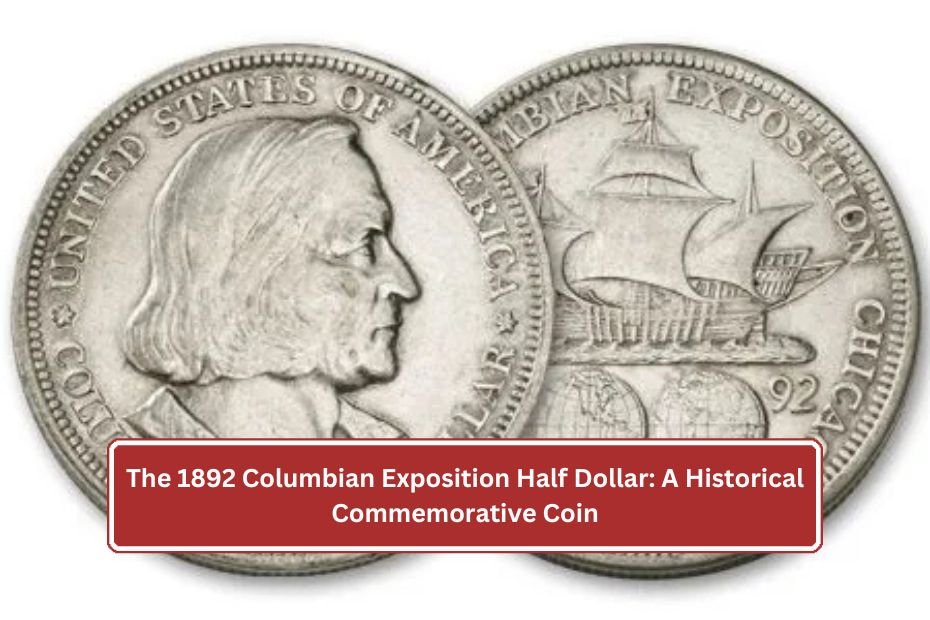The 1892 Columbian Exposition Half Dollar is a significant piece of American coinage, commemorating the 400th anniversary of Christopher Columbus’s arrival in the Americas. This coin not only represents a pivotal moment in history but also reflects the artistic and cultural aspirations of the United States during the late 19th century. In this article, we will delve into the historical context, design features, significance, and current status of the 1892 Columbian Exposition Half Dollar.
Historical Background
The Columbian Exposition, officially known as the World’s Columbian Exposition, was held in Chicago from May 1 to October 30, 1893. It was organized to celebrate the 400th anniversary of Christopher Columbus’s voyage across the Atlantic Ocean in 1492. The exposition aimed to showcase American art, culture, and progress, and it attracted millions of visitors from around the world.
To help finance the exposition, the U.S. Mint was authorized to issue a commemorative half dollar coin. The legislation for the coin was signed into law on March 3, 1892, allowing for the minting of the Columbian Exposition Half Dollar to honor Columbus and the spirit of exploration.
Design Features
The design of the 1892 Columbian Exposition Half Dollar is notable for its artistry and symbolism. Here are the key features:
| Feature | Description |
|---|---|
| Obverse | The front of the coin features a profile of Christopher Columbus, facing left. This design was created by the renowned engraver Charles E. Barber, who served as the Chief Engraver of the U.S. Mint. |
| Reverse | The reverse side displays an image of the Santa Maria, Columbus’s flagship, sailing across the ocean. Above the ship, there is a depiction of a banner that reads “1492,” commemorating the year of Columbus’s first voyage. |
| Edge | The edge of the coin is reeded, consistent with other half dollars of the time, adding to its traditional coin appearance. |
The coin was struck in 90% silver and 10% copper, giving it a brilliant luster that makes it attractive to collectors.
Minting and Rarity
The 1892 Columbian Exposition Half Dollar had a relatively high mintage, with approximately 5,000,000 coins struck. This makes it more accessible compared to other commemorative coins. However, due to its historical significance, it remains a favorite among collectors.
| Year | Mintage | Remarks |
|---|---|---|
| 1892 | Approximately 5 million coins | The coin was available for purchase at the exposition and later distributed through the U.S. Mint. |
Although many coins were produced, their condition greatly affects their value today. Collectors often seek coins in higher grades, which are much rarer than those in lower grades.
Significance and Collectibility
The 1892 Columbian Exposition Half Dollar holds a special place in numismatic history for several reasons:
| Factor | Details |
|---|---|
| Cultural Importance | The coin represents a celebration of exploration and the historical significance of Columbus’s voyages. |
| Collectibility | It is highly sought after by collectors, especially those interested in commemorative coins and American history. |
| Value | Depending on the condition, prices for the 1892 Columbian Exposition Half Dollar can range from $20 to several hundred dollars. Higher-grade coins can sell for much more. |
The combination of historical importance and artistic design makes this coin a staple in many numismatic collections.
Current Status and Preservation
Today, the 1892 Columbian Exposition Half Dollar is a cherished piece of American history. If you own one or plan to add it to your collection, proper care is essential. Here are some tips for maintaining the coin’s condition:
| Preservation Tips | Details |
|---|---|
| Storage | Store the coin in a cool, dry place to avoid oxidation and wear. |
| Protective Holders | Use archival-quality holders or capsules to prevent scratches and environmental damage. |
| Handling | Always handle the coin by its edges to minimize fingerprints and oils from your skin. |
By taking these precautions, collectors can help preserve the beauty and historical significance of the 1892 Columbian Exposition Half Dollar.
Conclusion
The 1892 Columbian Exposition Half Dollar is much more than a coin; it is a symbol of discovery and the spirit of exploration that characterized the late 19th century. Commemorating the 400th anniversary of Columbus’s arrival in the Americas, this coin reflects the cultural and artistic aspirations of a nation. Its rarity, historical context, and striking design make it a valuable piece for collectors and a testament to the enduring legacy of exploration in American history. Whether you are a seasoned collector or just beginning your journey into numismatics, the 1892 Columbian Exposition Half Dollar is a captivating piece of America’s rich heritage.
FAQ’s
What is the 1892 Columbian Exposition Half Dollar?
The 1892 Columbian Exposition Half Dollar is a commemorative coin issued by the U.S. Mint to celebrate the 400th anniversary of Christopher Columbus’s arrival in the Americas. It features a profile of Columbus on the obverse and his ship, the Santa Maria, on the reverse.
Why was this coin created?
The coin was created to commemorate the World’s Columbian Exposition held in Chicago in 1893, which showcased American progress and celebrated the legacy of exploration. The coin aimed to help finance the exposition and honor Columbus’s historical significance.
How much is the 1892 Columbian Exposition Half Dollar worth?
The value of the 1892 Columbian Exposition Half Dollar varies based on its condition, typically ranging from $20 to several hundred dollars. Higher-grade coins can command much more, making them desirable among collectors.

